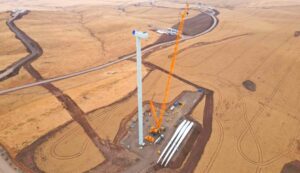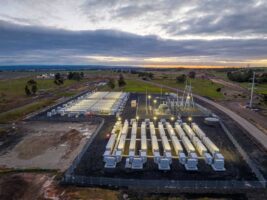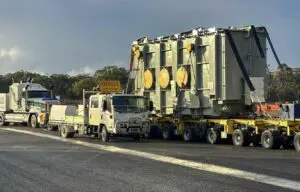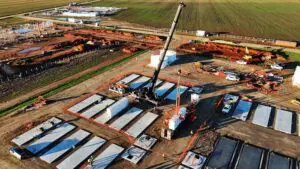The connection and operating processes for Australia’s rapidly growing fleet of big batteries should become a lot simpler with the implementation early next month of a number of key reforms by the Australian Energy Market Operator (AEMO).
The main thrust of the changes – part of ongoing reforms to the National Electricity Market to take into account of newly emerging technologies – will be the ability of battery storage projects to register as a single unit, rather than two.
This will smooth the process for connections for new batteries and should, in theory, make it simpler to bid into the market and for market dispatch. It should also create greater clarity for the market to see how much storage is actually available, and more flexibility for big batteries to provide crucial market services.
Since the very first Tesla big battery (aka the Hornsdale Power Reserve) was connected to the grid in South Australia in 2017, big battery projects have had to have two identities – one as a generator for when they are dispatching into the grid, and another as a customer, or load, when they are charging.
That was largely due to the incumbency of the system that operated for decades, it was not designed for bi-directional flows.
But it meant added costs, a lack of visibility, and a lack of flexibility, particularly when it came to participating in the ancillary services markets, such as frequency control and the newly developed very fast frequency control markets.
It meant, in short, that the big batteries – and there is now 1.4 GW of battery capacity in the grid, according to AEMO – were not able to deliver the sort of flexibility that is advertised on the box. It has also limited the ability of “virtual power plants” to deliver their full suite of services.
AEMO hopes that the new reforms, due to “go live” in early June, will help the growing fleet of big batteries (there is more than 4 GW of new capacity under construction or contract, many with up to four hours of storage), to deliver their full suite of services, including shifting excess solar from the middle of the day to the evening demand peaks.
“Grid-scale batteries enable Australia to harness an abundant solar resource,” says AEMO’s head of reform delivery, Violette Mouchaileh.
“If we can capture the solar energy created in the middle of the day to charge these batteries, they can then meet peak demand at night, helping to reduce our reliance on ageing thermal generation.”
It has not been an easy process, however, as many of the big batteries that already operated on the grid had finessed and optimised their systems, and particularly their AI-dominated auto-bidding systems, on the old processes.
That means they have and had some work to change their processes, and Renew Economy understands that it has taken several attempts at designing the fine details of the reform to the satisfaction of all participants.
One of the biggest gripes of the incumbent batteries, and the new projects, is that this also means they face network charges on both sides of the equation. The battery operators complain that it effectively means they are being billed twice for the same service. Households with rooftop solar systems are about to suffer the same pain.
The change to a single unit for registration and market bidding is part of a broader suite of reforms designed to improve the connection process, and the operations of the market.
One of the big ironies of the new batteries being located alongside existing, or planned, wind and solar farms is that they had to operate as separate entities, and not bid together.
That roadblock has since been removed, although many batteries choose to operate as a seperate entity because the process is simpler.
Other changes are being made to the cost recovery processes for non-energy services such as system services and interventions. AEMO says these changes better reflect the need for the services going forward and provide greater incentives for more efficient behaviour.
See also: Renew Economy’s Big Battery Storage Map of Australia.










